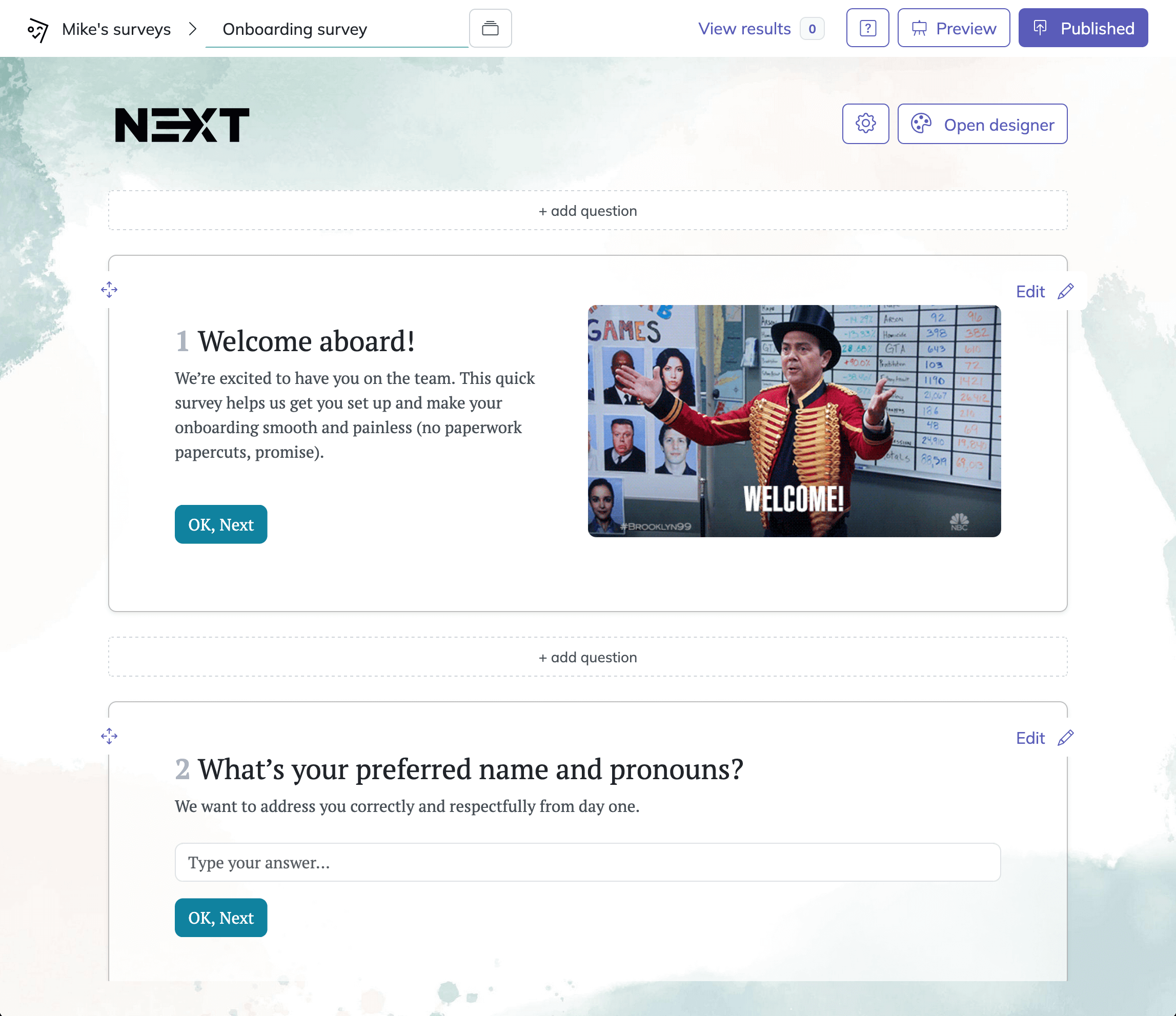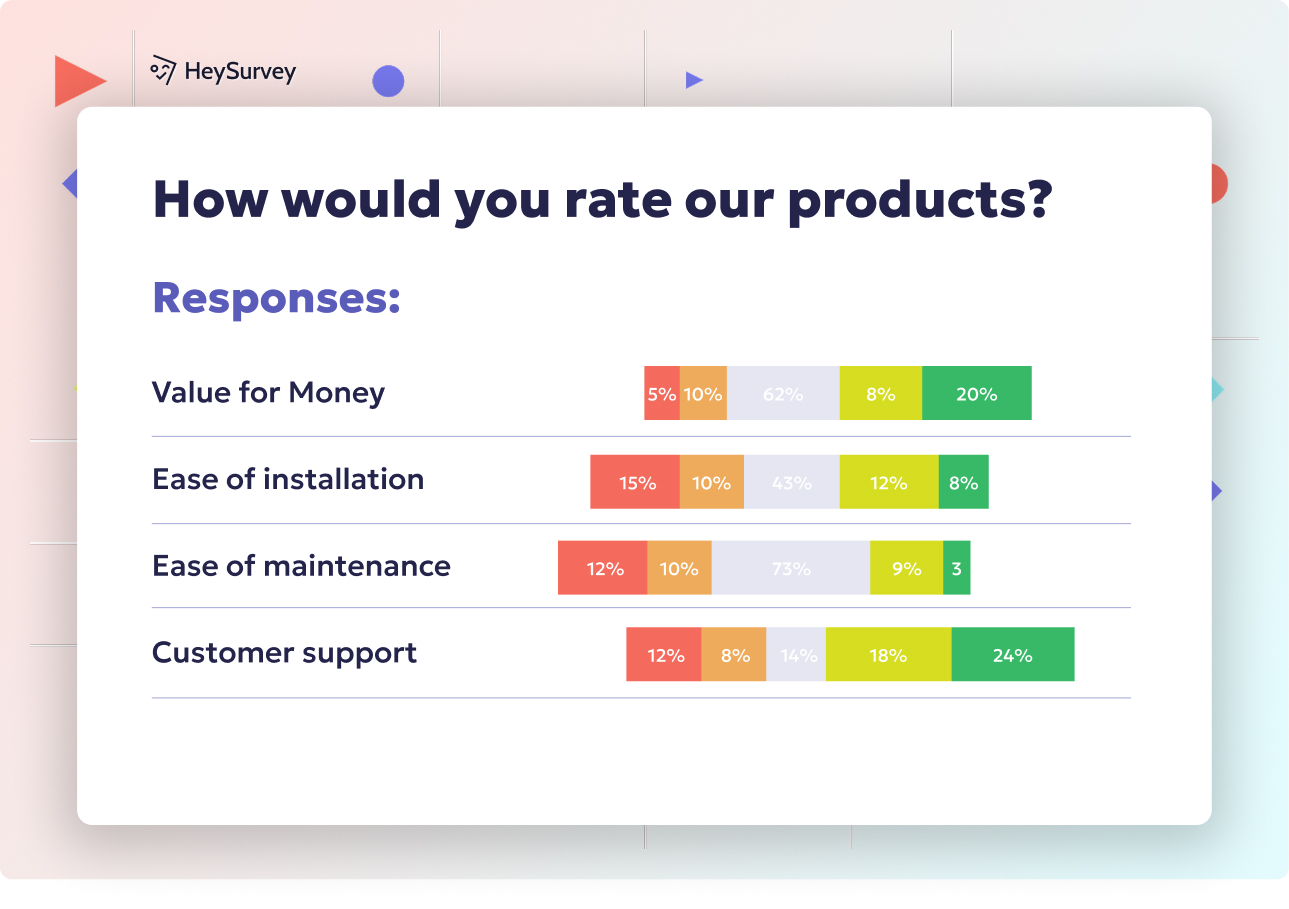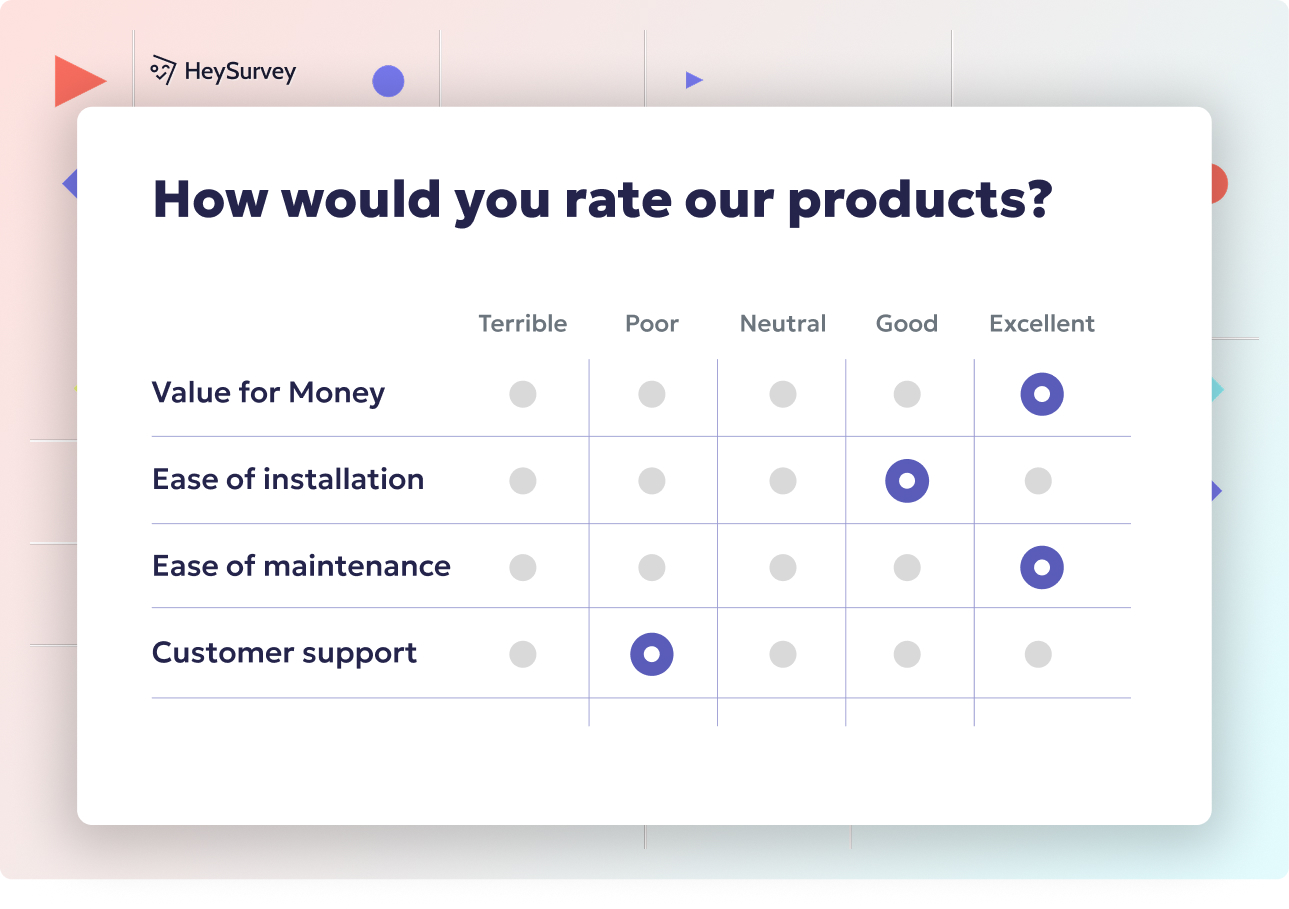31 Sociology Research Survey Questions for Effective Data Collection
Explore 30+ sociology research survey questions with practical examples covering demographics, attitudes, behaviors, culture, and more insights.
Sociological surveys are the all-seeing eyes of social science, peering into the nooks and crannies of society to collect meaningful data. Well-designed sociology survey questions unlock patterns, trace trends, and spark “Aha!” insights about how people live, think, and relate. By carefully picking each question, sociologists reveal the hidden machinery beneath everyday life. From social research questionnaires that map lifestyles to those measuring attitudes and policy support, get ready for practical guidance on seven top survey types—with sample questions—for anyone collecting sociological data today.
Demographic & Socio-Economic Surveys
Definition & Core Focus
Demographic questions are the backbone of any solid survey—they pin down the “who” behind social patterns. These surveys gather basic yet powerful variables: age, gender, income, education, occupation, and household structure. With these details, sociologists can map the terrain of a group, sketching the outlines before painting in the richer picture of attitudes and behaviors.
Whether you’re investigating social mobility or sampling biases, socio-economic surveys ensure you’re comparing apples to apples. These surveys shine in population profiling, quota setting, and adjusting for confounders when analyzing cause and effect. For anyone keen to understand population characteristics, these baseline questions are non-negotiable.
You’ll also find that demographic questions are essential for tracking trends over time. Want to know how the workforce has changed or if educational gaps are closing? Ask the right baseline queries, and you’ll see the story unfold across generations.
Why & When to Use
Use demographic and socio-economic questions when:
- Defining your survey sample and controlling for confounding factors.
- Setting quotas in stratified sampling to ensure all voices are heard.
- Analyzing social class, mobility, or household characteristics over time.
They’re a must for slicing your data and uncovering the stories behind the statistics. Need to know if policy support differs by income? Or if generational shifts are real? You’ll need these questions upfront.
Five Sample Questions
Here are five trusty questions to get you started:
What is your highest completed level of education?
Which of the following best describes your current employment status?
Into which income bracket does your total annual household income fall?
How many people, including yourself, live in your household?
With which racial or ethnic group(s) do you most identify?
Standardized measurement of sociodemographic characteristics is essential for comparability in social science surveys. (gesis.org)

Creating your sociology survey with HeySurvey is a breeze, even if you’re new to the platform. Just follow these three easy steps, and you’ll have your survey ready to roll in no time!
Step 1: Create a New Survey
Head over to HeySurvey and click “Create New Survey.” You can kick off your project by choosing a template tailored to your survey type or start fresh with an empty form. This gives you flexibility depending on whether you want a quick start or full control from scratch. Once you’re in the Survey Editor, you can rename your survey for easy organization.
Step 2: Add Your Questions
Now the fun begins! Click “Add Question” to insert each question you need. HeySurvey offers tons of question types—from simple text inputs, multiple-choice, to rating scales like Likert for attitudes. For example, slide in demographic questions, attitude scales, or behavioral queries exactly as your sociological study requires. Customize each by editing the question wording, adding descriptions, and toggling whether answers are required. You can even sprinkle in images or videos if you want to jazz things up.
Step 3: Publish Your Survey
Once your questions feel polished and just right, hit “Preview” to see what your participants will experience. Making tweaks here is easy and instant. Happy with how it flows? Click “Publish” and your survey goes live! HeySurvey will generate a shareable link you can send to respondents or embed on your website.
Bonus Step: Apply Branding
Want your survey to look pristine and professional? Open the Designer Sidebar to add your logo, choose color schemes, fonts, and background images. This lets your survey reflect your organization’s vibe or study theme without breaking a sweat.
Bonus Step: Define Settings or Skip Into Branches
HeySurvey’s Settings Panel lets you set start/end dates, response limits, or redirect URLs after completion. Need to tailor the survey path? Use branching to send respondents down different question routes based on their answers. This keeps your data relevant and respondents engaged by skipping irrelevant questions.
Whenever you’re ready, just hit the button below to open a ready-made template for your sociology survey and dive into creating!
Attitude & Belief Surveys
Definition & Core Focus
Ever wondered how people really feel about hot-button issues or what beliefs drive their decisions? Attitude survey questions pull back the curtain and measure where respondents sit on crucial topics like inequality, trust, and ideology. These questions offer a peek into subjective opinions and help chart the belief scale across groups.
Digging into attitudes reveals what people value most, what they shun, and how they size up society’s big debates. From politics to religion, these queries help likert attitude measurement experts track shifting tides in public opinion.
Attitude and belief surveys excel at mapping the surprisingly diverse ideological landscape of any community. It’s like having a mood ring for society—revealing changing shades after events or interventions.
Why & When to Use
Use attitude and belief surveys to:
- Predict public support for upcoming reforms or policy shifts.
- Reveal ideological differences between age groups, regions, or cultures.
- Monitor how attitudes evolve after major news, campaigns, or interventions.
They’re perfect for capturing the pulse of a moment and comparing feelings across time, place, or demographic slices.
Five Sample Questions
To kickstart your attitude and belief survey, consider:
On a scale of 1–7, how strongly do you agree that income inequality is a serious national problem?
How important is religion in your daily life? (Not at all – Extremely important)
To what extent do you trust the national government to act in citizens’ best interests?
Which statement best reflects your view on gender roles in parenting?
How open are you to having close friends from a different political party?
Research indicates that White students exhibit higher attitude reliability, characterized by larger variances in true opinions and smaller measurement errors, compared to Latino and Asian American students. (arxiv.org)
Behavioral & Lifestyle Surveys
Definition & Core Focus
Behavioral surveys snag the juicy details of what people actually do, not just what they say they believe. Want to know how often someone recycles, exercises, or volunteers? These lifestyle questionnaires are your window into daily routines and real-world choices.
Rather than just speculate, researchers use these surveys to tie lifestyles to health, economics, or environmental outcomes. If you’re curious about how self-reported behavior data lines up with policies or social trends, these questions tell all.
It’s also a smart way to test if what people say matches what they do—do workout enthusiasts actually hit the gym, or just like wearing trendy yoga pants? Behavioral surveys untangle these links and fuel interventions that work.
Why & When to Use
Reach for behavioral and lifestyle surveys to:
- Connect specific behaviors (e.g., exercise or screen time) to health or economic results.
- Segment populations for targeted health, educational, or marketing interventions.
- Test and validate if stated attitudes genuinely predict daily actions.
When planning prevention campaigns or uncovering risk factors, behavioral data is gold. It helps reveal who might benefit most from support or tailored outreach.
Five Sample Questions
Add these to your next lifestyle survey:
During the past week, how many days did you engage in at least 30 minutes of physical activity?
How often do you recycle household waste? (Never – Always)
In the last 12 months, how many times did you volunteer with a community organization?
On average, how many hours per day do you spend on social media?
When shopping for groceries, how frequently do you read nutrition labels?
Social Network & Relationship Mapping Surveys
Definition & Core Focus
Social network survey questions are like drawing a constellation of connections around each person surveyed. These instruments map who you trust, who you call, and with whom you swap life advice. By tracing the number and strength of ties, researchers uncover how social capital works its magic.
Ego-network mapping shows how people are stitched together into families, friend circles, and communities. With these insights, you can track how information, innovations, or even viruses spread. Each answer helps build a better model of mutual support, influence, and collective resilience.
Relationship surveys aren’t just about numbers—they get at quality too. Who’s your lifeline in a crisis? These questions reveal much about belonging and the invisible glue binding groups.
Why & When to Use
Turn to social network and relationship mapping surveys when you need to:
- Discover how tightly knit a group or community is.
- Model pathways for information or health diffusion.
- Study peer influences, social support, or group resilience in tough times.
Understanding these networks is vital for designing effective interventions or predicting how ideas might catch on (or fizzle).
Five Sample Questions
Base your next relationship survey on these gems:
How many close friends can you confide in about personal matters?
Indicate how frequently you communicate with immediate family members not living with you.
Who do you turn to first for advice on major life decisions? (Open-ended, name generator)
How many of your coworkers do you socialize with outside work at least once a month?
Rate the overall supportiveness of your social network (1 = very low, 7 = very high).
Social network mapping effectively identifies key information sources and communication barriers, aiding in the design of targeted interventions. (jprm.scholasticahq.com)
Cultural Norms & Values Surveys
Definition & Core Focus
Ready to dive into the “why do you do it that way?” questions? Cultural values surveys explore how customs, norms, and traditions shape lives. These norms questionnaires tell us what’s okay to do (and what’s not!) in different cultures, and how those expectations shift or persist.
By asking about symbols, traditions, or taboos, researchers grasp the pulse of communities. These surveys are also supreme tools for comparing different cultural groups, or spotting generational evolution. Do younger folks keep grandma’s rules, or are they making up new ones?
When studying migration or adapting social services, understanding cross-cultural research questions becomes indispensable.
Why & When to Use
Use cultural norms and values surveys:
- To compare how values differ between subcultures, generations, or immigrant groups.
- When tracking how traditions evolve or disappear over time.
- In assessing how well new arrivals acculturate, or the challenges of integration.
These surveys highlight both the ties that bind and the sparks of change. If you want to understand conflict, cooperation, or community identity, start with values and norms.
Five Sample Questions
Try these for cultural insights:
How appropriate is it for adult children to live with their parents until marriage?
In your culture, how acceptable is public display of affection? (Very unacceptable – Very acceptable)
Which of the following holidays do you celebrate each year?
How important is preserving native language within your household?
What is the preferred way to resolve conflicts in your community? (Open-ended)
Community Engagement & Civic Participation Surveys
Definition & Core Focus
How involved are people in local life? Civic participation surveys tap into the nitty-gritty of volunteering, advocacy, and community groups. These community engagement questions measure everything from volunteering at the animal shelter to protesting city policies.
Civic surveys reveal who’s shaping decisions and working behind the scenes for change. Social capital measurement here helps spot the health of democracy and the roots of social cohesion. High participation? Expect thriving neighborhoods and lots of high-fives at bake sales.
They’re also fabulous tools to spot what stops people from getting engaged—especially in marginalized communities where barriers run high.
Why & When to Use
Use community engagement and civic participation surveys:
- To predict patterns in voting, activism, and neighborhood involvement.
- For evaluating local government outreach or impact of civic education programs.
- In identifying obstacles to participation and designing ways to boost inclusion.
If you care about building vibrant, resilient communities, these surveys point the way.
Five Sample Questions
Get started with these:
In the past 12 months, how many public meetings (e.g., town halls) have you attended?
Have you contacted an elected official regarding a community issue in the last year? (Yes/No)
How likely are you to sign a petition on an issue you care about?
Rate your sense of belonging to your neighborhood (1 = none, 7 = strong).
Which local organizations do you belong to? (Check all that apply)
Social Issue Perception & Policy Support Surveys
Definition & Core Focus
There’s nothing like a policy support survey for getting a snapshot of public opinion on urgent social problems. These surveys dissect how aware people are of issues like climate change, healthcare, or gun violence. In a world where headlines move fast, these social issues questionnaires help keep tabs on what the public cares most about right now.
Beyond awareness, these surveys gauge support for potential solutions, helping policymakers and advocacy groups feel the societal breeze—or storm. Want to know if a new law is likely to win or flop? A quick check with a public opinion poll can offer actionable clues.
They also shine at capturing media influence: are people worried about something because it’s all over TV, or is it a deeper, more personal concern?
Why & When to Use
Turn to social issue perception and policy support surveys to:
- Inform policy planning, advocacy, or agenda-setting.
- Chart shifts in issue salience when big events change the national conversation.
- Compare public worry and support regionally, by age, or among diverse groups.
Identifying what keeps people up at night—or what makes them hopeful—guides smarter, more relevant policy.
Five Sample Questions
Set the scene with these:
How serious do you believe climate change is for your community?
Do you support implementing a universal basic income? (Strongly oppose – Strongly support)
Which three social problems worry you the most? (Rank order)
How confident are you that stricter gun laws would reduce violent crime?
How frequently do you discuss social issues with friends or family?
Best Practices: Dos and Don’ts for Crafting Sociology Survey Questions
Dos
Nailing your best practices for survey design boosts reliability and makes sure your data sings. Here’s what you must do:
Use clear, neutral language free of academic jargon.
Pilot-test items for reliability and cultural sensitivity.
Balance closed and open-ended questions to enrich insights.
Randomize response options to reduce order bias.
Include screening questions to ensure appropriate skip logic.
Stick to these habits, and your survey will shine with clarity and inclusivity. Well-crafted questions invite honest answers and keep confusion at bay.
Don’ts
Avoid these missteps to steer clear of bias or confusion:
Don’t double-barrel: avoid combining two concepts in one item.
Don’t lead respondents with loaded wording or emotive adjectives.
Don’t overuse agree/disagree formats; rotate scales to fight acquiescence bias.
Don’t ignore ethical protocols—secure informed consent and anonymize data.
By sticking to the brightest “dos and don’ts,” you protect your research from common pitfalls. Survey bias retreats when faced with clean language, thoughtful structure, and ethical respect.
Conclusion
Survey questions are the unsung heroes of sociology, revealing the stories and structures beneath everyday life. Whether you’re mapping social networks or digging into cultural values, the right question opens doors to understanding. Carefully crafted surveys inspire trust, honest answers, and robust insights. With these foundations, your research moves from curious to conclusive—and maybe even a bit world-changing. Now, go forth and ask boldly!
Related Miscellaneous Surveys

30+ Interest Survey Questions to Uncover What People Care About
Discover 30+ effective interest survey questions with sample templates to uncover what people tru...

30 Relationship Survey Questions to Strengthen Your Bond
Discover 30 insightful relationship survey questions with sample quizzes to boost partner satisfa...

